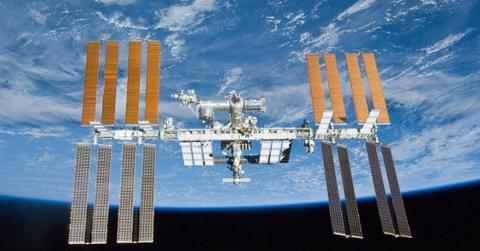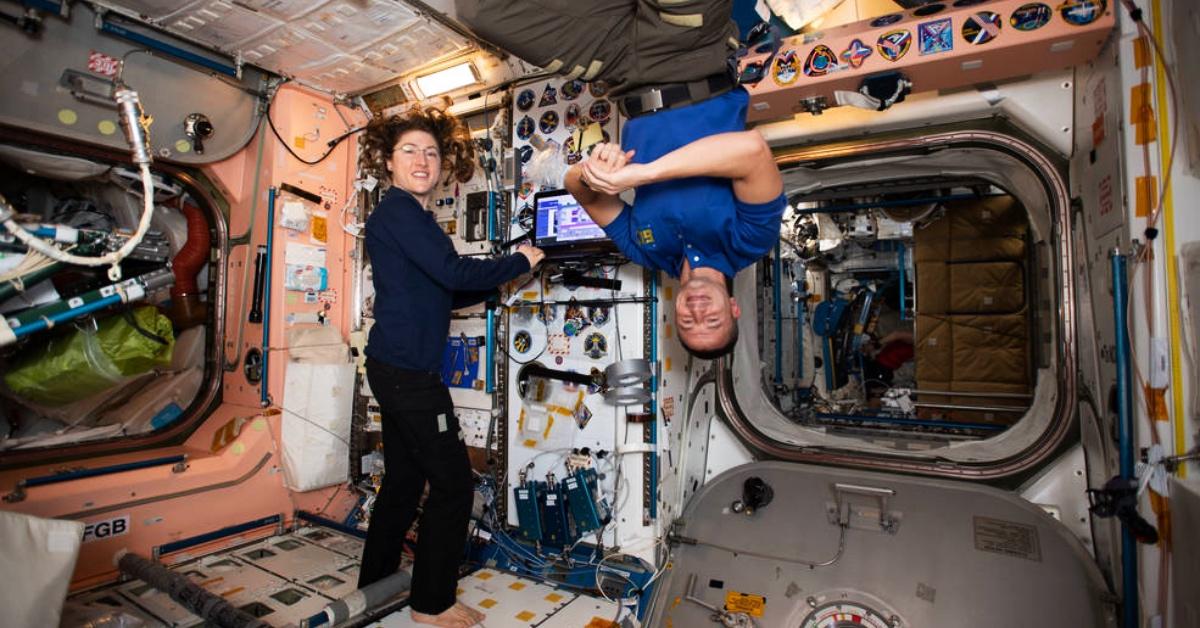Who Owns the International Space Station? 5 Space Agencies Have Stake in It
With more than a dozen countries behind the ISS project, many often wonder who owns it? There are five space agencies that have a stake in the ISS.
March 30 2022, Published 1:14 p.m. ET
The ISS (International Space Station) is a complex of stations that were built by 15 countries and are now operated by five space agencies. The first piece of the station was launched in November 1998. After a total of 43 rocket launches were conducted, the station was complete.
With more than a dozen countries behind the ISS project, many people often wonder who owns it. Here's what we know about the agencies and countries that have a stake in the ISS and space exploration.
Who owns the International Space Station?
The ISS is composed of several different compartments, each of which is occupied by a different space agency. These include the Canadian Space Agency, the European Space Agency, the Japan Aerospace Exploration Agency, NASA (National Aeronautics and Space Administration), and the State Space Corporation, or Roscosmos.
Each of these agencies plays a role in the daily operation of the ISS. “The station was designed to be interdependent and relies on contributions from across the partnership to function,” according to NASA. Essentially, what this means is that each agency depends upon one another in order to function properly.
Because there are multiple countries involved in the ISS and its operations, you could say the following countries each own a slice of it:
- United States
- Russia
- Canada
- Japan
- Participating countries of the European Space Agency
The space agencies operating the ISS must work together despite what might be transpiring down on Earth.
While the ISS is orbiting Earth, its occupants are working collaboratively to keep the station functioning and to ensure each other's health is kept up. On the other hand, each agency is also responsible for carrying out its own tasks and experiments. Now, because the astronauts and cosmonauts rely on each other so heavily, they cannot allow the discrepancies existing on Earth to interfere with their operations.
We were recently able to witness the relationship that exists among the space agencies when a U.S. astronaut and two Russian cosmonauts returned to Earth in the same capsule on March 30, reports Reuters. NASA’s Mark Vande Hei and Roscosmos’ Anton Shkaplerov and Pyotr Dubrov returned home together, despite the tension between Russia and the U.S.
Ukrainian President Volodymyr Zelensky has called upon the U.S. and many other countries for support during the unprovoked war led by Russia. While the U.S. has issued sanctions against Russia and its oligarchs, it hasn't entered the war directly.
Here are some interesting facts you may not know about the International Space Station.
The ISS is a fascinating project that has given researchers a glimpse into the territory we yearn to learn more about. Aside from the fact that it houses space researchers from all over the world for weeks and even months, there are some other surprising facts you should know about the ISS.
Some of the surprising facts include:
- The ISS has been occupied since November 2000.
- The ISS orbits the Earth 16 times within a 24-hour period. This means the occupants onboard travel through 16 sunrises and sunsets, says NASA.
- Astronauts are able to exit the ISS and go on spacewalks.
- The space in which astronauts live and work is equivalent to the size of a six-bedroom house. There are six sleeping quarters, two bathrooms, and a gym.
- The astronauts on board work out a minimum of two hours a day to “mitigate the loss of muscle and bone mass in the human body.”
- The ISS took nearly a decade to build and weighs about 900,000 pounds.
- The ISS travels at 17,500 miles an hour, according to NASA, and it is about the size of a football field including the end zones.
Given how low the ISS orbits around Earth, it's visible to the human eye. In fact, you can check when sightings of the ISS are possible by visiting Spot the Station on NASA's website.


